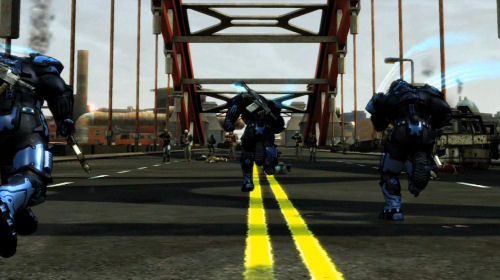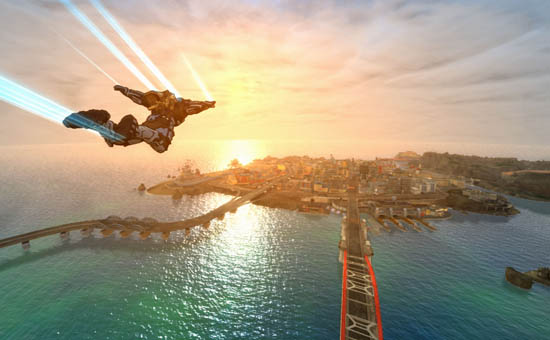The original Crackdown for me holds a very special place in my heart. For the most part, it’s largely responsible for the creation of this website - it solidified my love of cooperative gaming. In fact, Crackdown may be the game I’ve spent the most time with this generation - putting well over 40 hours into the original - and there’s still stuff left to do. So how is Crackdown 2 going to match up with it? What quirks and hooks can developer Ruffian Games add to the Crackdown formula to make it bigger, badder and more addictive? The answer? It doesn’t take much.
A lot of people look for sequels to take everything the original game did to the next level, to change up the formula, and to feel like a totally different game. Crackdown 2 isn’t that game, and to me that’s a good thing. You’re back in Pacific City, now in ruins after a virus has broken out unleashing hordes of freaks on the population. There’s only one gang this time, the Cell, which controls key sections of the city as it tries to fight back the growing freak problem. Once again you’re an agent for the Agency, a police organization hell bent on bringing order and government to Pacific City. Sadly there’s only four characters to choose from for your agent, and all are nearly identical. Add to the fact that once you hit level two in a few skills your agent gets a helmet thrown on, and you miss that “look at my avatar” feeling the first game had in co-op.
You’ll still be working to level up your Agents five base skills: agility, guns, strength, explosives and driving. Completing actions in any of these categories will collect mini orbs to level up your character, and you can supplement the XP increase by finding other orbs too. While the lower levels rank up pretty quickly, it will take you a bit longer to max out your agent. Depending on how effecient you are it’ll be around the 10 hour mark of play.

Supply points have been replaced with tactical locations and in these the Agency will drop you, weapons, and vehicles for your battle with Cell and the Freaks. These locations appear more frequently than supply points did in the first, and they require liberation of more than one section of the city at a time to achieve. If you don’t take back all tactical locations in a group, Cell has a chance to regain once you’ve conquered - creating an ebb and flow to the game world.
The big mission of the game is to capture beacons to create power grids for the Agency’s light mass bombs. These power grid triangulates over a Freak lair and allows you to conquer it much like you conquered a gang bosses territory in the first game. These lairs live deep underground and require a survival style mission as waves of Freaks try to stop the bomb from going off. As you get deeper and deeper into the game the Freaks get bigger and badder, they become larger in numbers, and the presence of a co-op partner makes these missions much less frantic and more strategic. The Freaks aren't the only enemies that get more difficult, Cell finds themselves getting more well equipped with armor and bigger guns trying to take down your efforts to save them from the Freaks.
The missions are only half the fun in Crackdown 2, now there’s a larger focus on collectibles and things to do. Orb types have been beefed up from two to five, with co-op orbs, renegade agility and renegade driving joining your standard agility and hidden orbs. Co-Op orbs require at least two people to pick up and the renegade orbs require you to chase them down to get them. In a way they replace the rooftop races and driving races in terms of earning bonuses for completing them, though both races are still present in the game. There’s also four kinds of audio logs to collect, each one from a different character presenting the back story of Crackdown 2.
